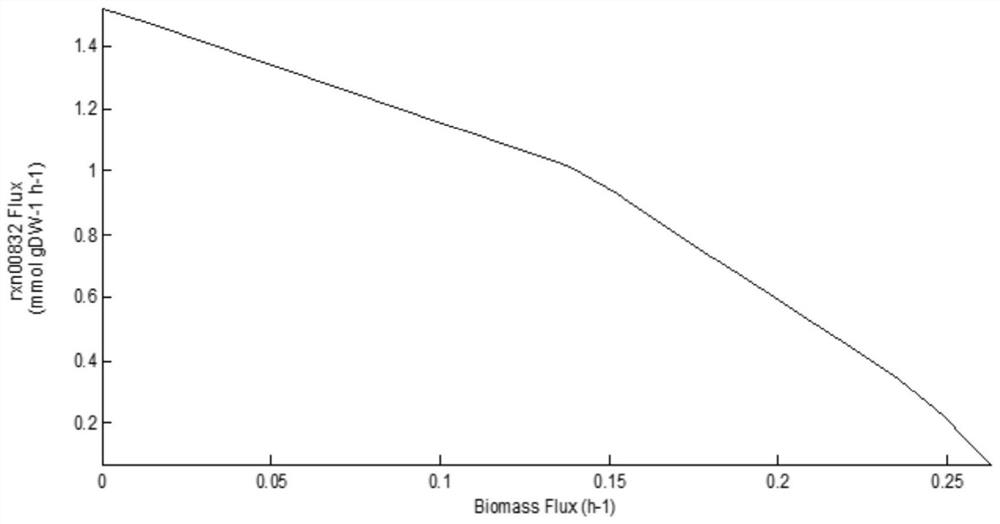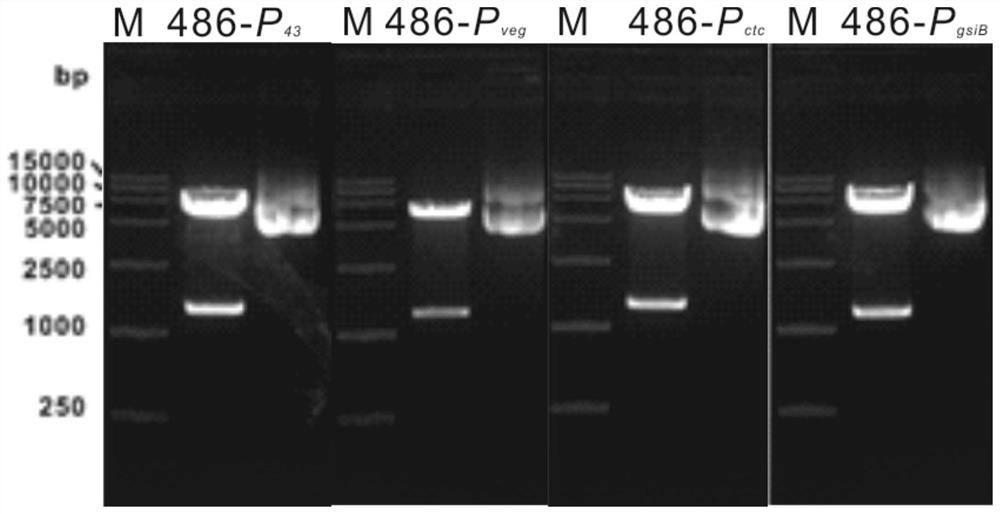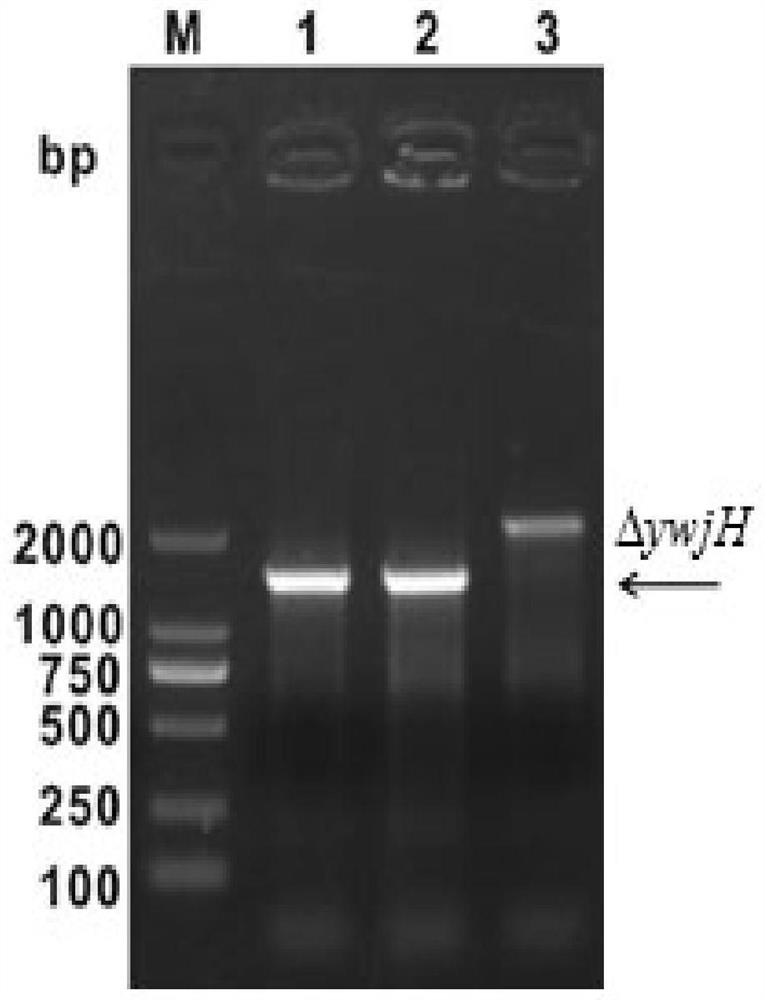Recombinant bacterium for fermentation production of purine nucleoside as well as construction method and application thereof
A technology of recombinant strains and purines, applied in the field of microbial fermentation, can solve problems such as changes in metabolic flux, lack of global regulation and engineering strategies for metabolic networks of target microorganisms, and inability to understand organism functions and phenotypes as a whole
- Summary
- Abstract
- Description
- Claims
- Application Information
AI Technical Summary
Problems solved by technology
Method used
Image
Examples
Embodiment 1
[0170] Example 1. Prediction of the transformation target of purine nucleosides based on the genome metabolic network model
[0171] (1) Correlation analysis between IMP and biomass
[0172] Based on the Bacillus subtilis genome metabolic network model iBsu1103V3, using flux balance analysis (flux balance analysis, hereinafter referred to as FBA) to calculate and analyze the maximum theoretical growth rate of cells is 0.26; the maximum theoretical synthesis flux of IMP is 1.52mmol· wxya -1 h -1 , the maximum theoretical conversion of IMP is 0.84mol / mol (IMP / glucose). The interaction between synthetic IMP metabolic flux and biomass growth was further exploited. like figure 1 As shown, the production rate of IMP decreases with the continuous increase of cell growth rate, indicating that the production and growth of IMP in the wild-type strain are in a competitive relationship, and the result of optimal growth of the strain will make the production of IMP zero. Therefore, it...
Embodiment 2
[0175] Embodiment 2. Construction and shake flask fermentation of purine nucleoside universal engineering strain
[0176] In order to enhance the purine synthesis pathway, the present invention transforms the expression control elements of the purine operon in the wild type W168. Four constitutive promoters with different strengths were selected (P 43 ,P veg ,P ctc and P gsiB ) to replace the promoter P of the purine operon pur .
[0177] First, primers P1-P16 were designed according to the genome sequence of Bacillus subtilis 168 in Genbank to amplify the promoters respectively; then, the amplified fragments were combined with P pur Overlap PCR (SOE-PCR) was performed on the upstream and downstream fragments of the fragments; finally, the recovered PCR product was digested and purified with NheI, and ligated with the gene editing vector pWYE486, and the ligated product was transformed into Escherichia coli EC135. Transformants were screened on LB plates containing 100 μg / ...
Embodiment 3
[0199] Embodiment 3. Construction and shake flask fermentation of the inosine engineering strain IR-9 enhanced by the purine operon
[0200] In order to increase the inosine accumulation of inosine engineering bacteria, the purine operon promoter of the engineering strain IR-4 was replaced by the screened P veg . Specifically: the pWYE486-P veg Transformed into IR-4, on the LB plate containing 1% xylose and 20 μg / mL erythromycin, the colony with the recombinant plasmid integrated into the chromosome was obtained by forward selection; by reverse selection, the second homologous Recombinant positive colonies were identified by PCR amplification of the strains. At the same time, the PCR product was purified for sequence determination and analysis to further confirm the correctness of the recombinant, which was named IR-9.
[0201] The 500mL shake flask fermentation test was carried out on the strains IR-6 and IR-9, and the shake flask fermentation results showed that P pur re...
PUM
 Login to View More
Login to View More Abstract
Description
Claims
Application Information
 Login to View More
Login to View More - R&D
- Intellectual Property
- Life Sciences
- Materials
- Tech Scout
- Unparalleled Data Quality
- Higher Quality Content
- 60% Fewer Hallucinations
Browse by: Latest US Patents, China's latest patents, Technical Efficacy Thesaurus, Application Domain, Technology Topic, Popular Technical Reports.
© 2025 PatSnap. All rights reserved.Legal|Privacy policy|Modern Slavery Act Transparency Statement|Sitemap|About US| Contact US: help@patsnap.com



